A Pilgrimage
"Whenever I want to remember what it's like to walk the Camino, I'll shower with my socks on." -Brittany, a fellow Pilgrim
Last week, I finished a 280km walk from Porto, Portugal, to Santiago de Compastela, Spain.
Historically a medieval pilgrimage, faithful Catholics walked to Santiago de Compostela (the burial place of St. James) seeking penance for their sins. Today’s pilgrims walk the Camino for many reasons: spiritual enlightenment, recovering from tragedy, cultural exploration, or pushing themselves to the limit.
My motivations for the Camino were largely the latter; I wanted to do something that seemed ridiculously, unnecessarily hard (as many of my friends back home pointed out, we have cars now, what was I doing?). I wanted tangible proof that I could get through pain, frustration, and impatience to reach a goal.
Preparing
After landing in Porto, I scrambled to prepare for the next two weeks. I shipped my big backpack directly to Santiago, opting to carry three days’ worth of clothes (and other necessities) in a smaller daypack. I went shopping for some Camino staples: hiking socks, blister tape, and a sleeping bag. I picked up my pilgrim credential, where I’d collect stamps along the journey.
My Camino began in a suburb of Porto, where I had the chance to meet one of my internet (turned real life) friends, Bidi. “Just walk to Spain,” she told me, promising I wouldn’t get lost.
Walking
The Days
Every day on the Camino started — and ended — the same.
There were some standout days; I spent my birthday in a beautiful, 5-star castle on a hill in Viana do Castelo, courtesy of a generous friend of mine (hi, I know you’re reading this).
But otherwise, my days (in which I walked anywhere from 12 - 35km) followed a standard formula:
Wake up before sunrise, eat a piece of fruit, and start walking.
Keep going until I found a café (if I was lucky), or until lunch (if I wasn’t). Make some new friends along the way.
Start walking again, and obsessively check the Buen Camino app to see where I could end the day.
Check into an albergue. Shower immediately. Hand wash my clothes, put them out to dry, figure out dinner with other pilgrims.
Lay out my clothes for tomorrow and do it again.
All I had to do, on any day, was walk. At the beginning of my Camino, the days were unbearably hot. In the middle and the end, it rained (and flooded, and stormed) daily.
Many days, I wondered if my Camino was over: when I woke up so sore after a 40km day that I couldn’t move (I took a rest day, and vowed I’d never do that again); when my shoes mysteriously went missing (I took a taxi to the nearest town and bought new ones); when my foot hurt so much that I was terrified I had a stress fracture (I made an educated guess, wrapped it in physio tape, and kept going). I spent the majority of my days tired of walking, wondering why something hurt, or dreaming of when I could change out of my wet socks. I told myself I could give up at any time, thought maybe I would, but oddly never did.
In the boredom and the pain was the greatest lesson I got from the Camino — mindfulness. I’ve practiced mindfulness before, but only in moments; maybe when I was trying to fall asleep, or washing the dishes. On the Camino, I lived it. Kilometer after kilometer, I started to notice every little thing about myself. I noticed which of my smallest movements were inefficient. I paid attention to where I was tense. I decided when to take a break, and how far to keep going, not based on some master plan I had devised days ago, but on how I was feeling. It was a completely foreign experience for me, and a new connection with myself that I hope I’ll always hold close.
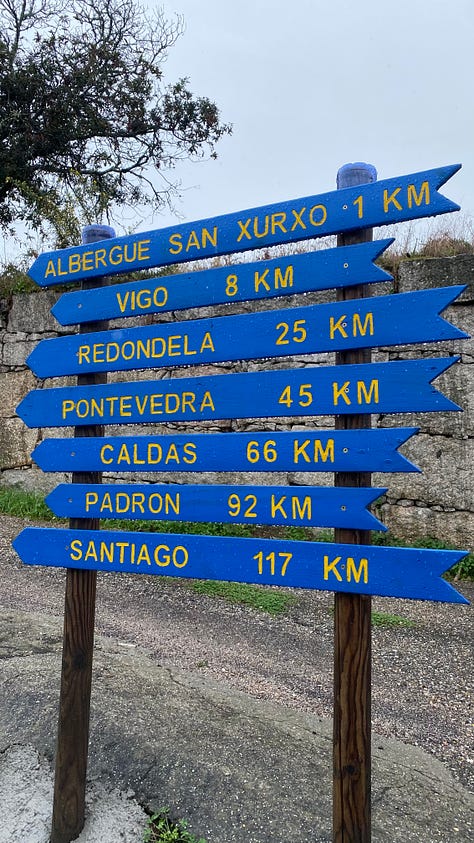
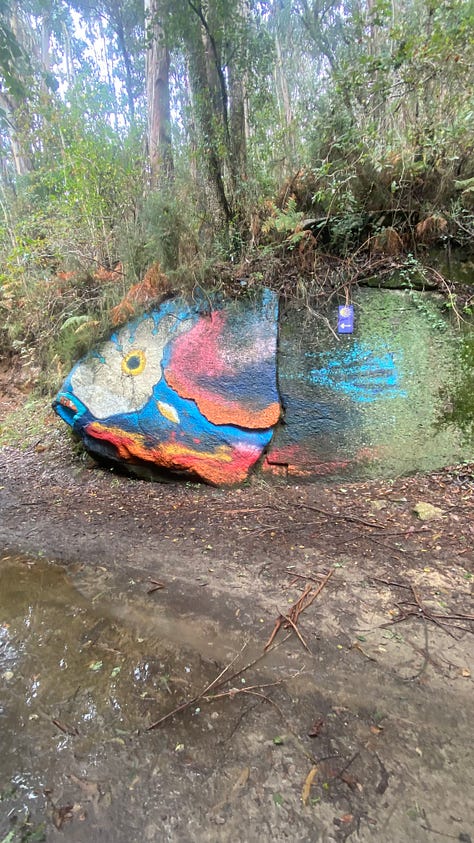
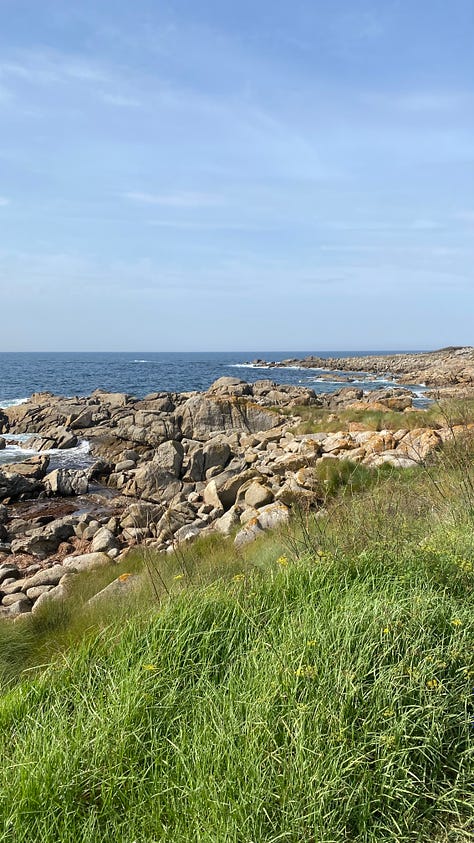
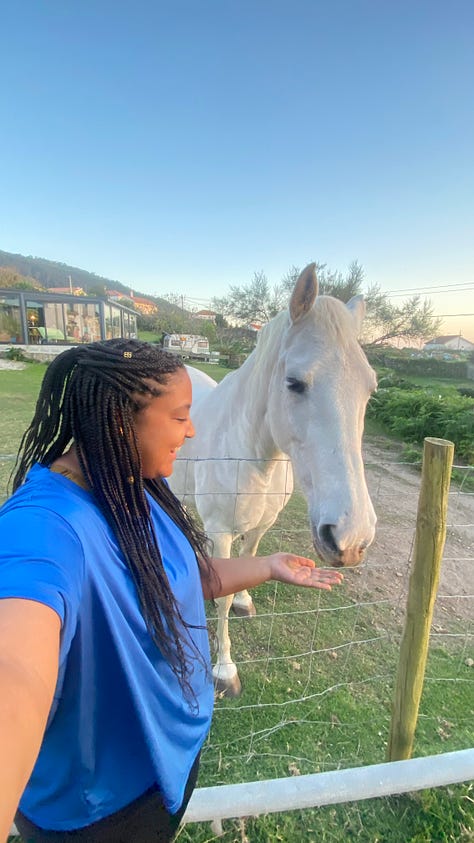
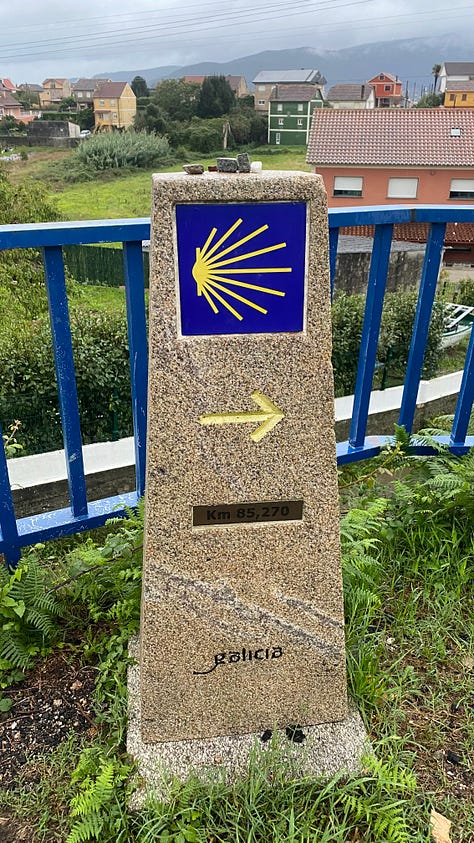
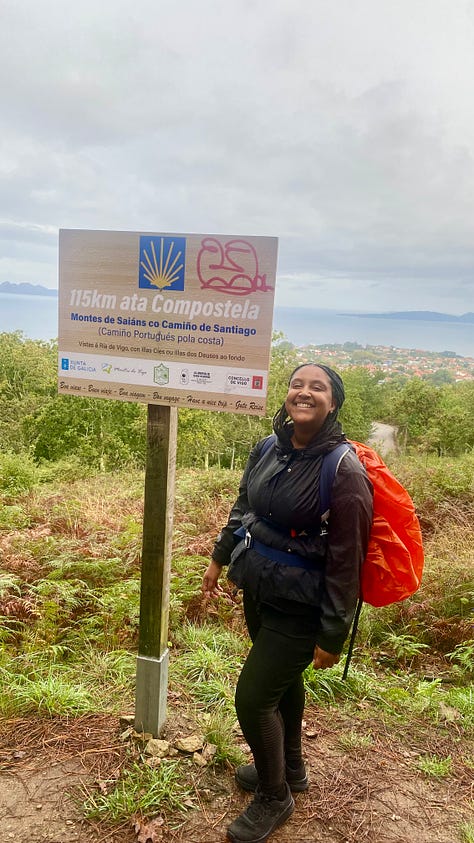
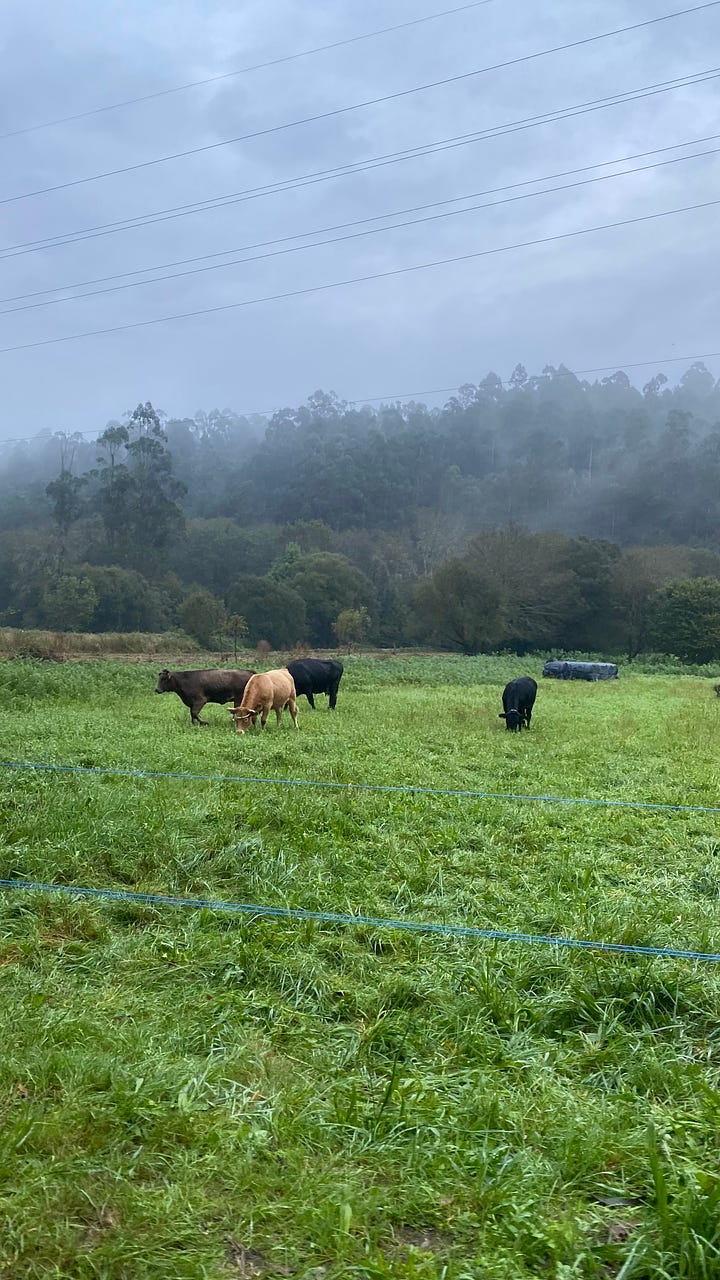
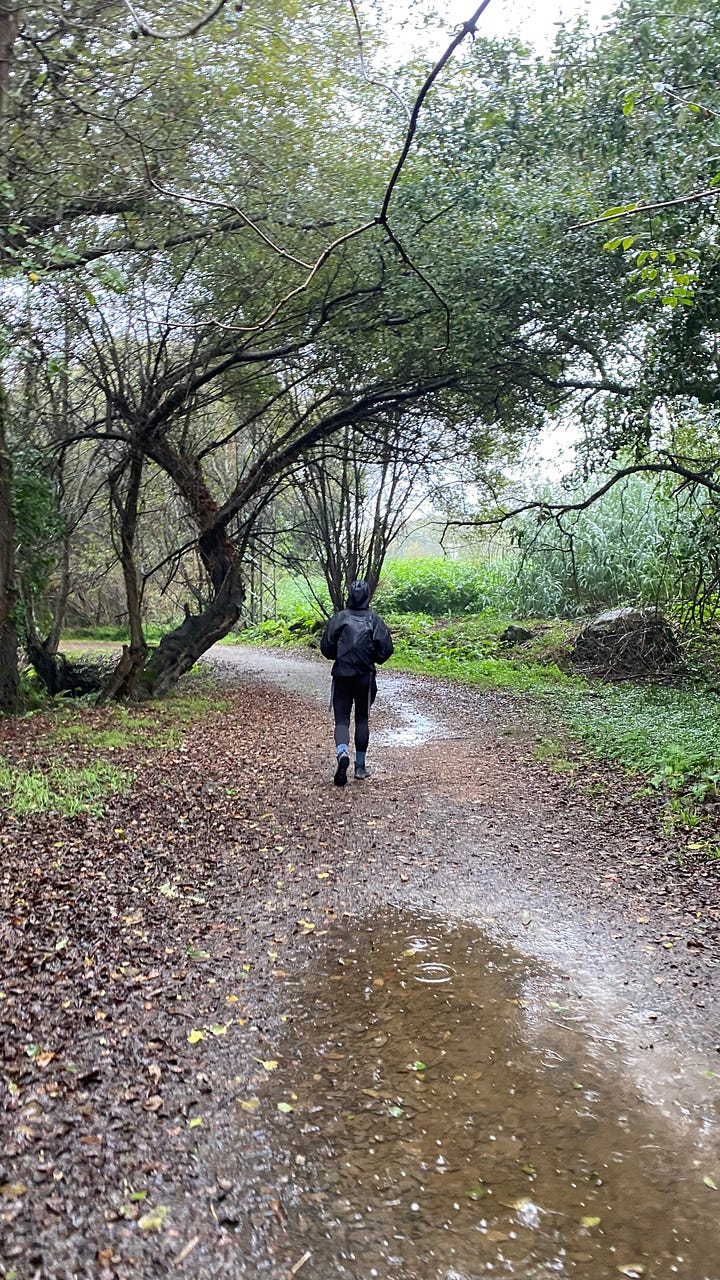
The People
There was something incredible about doing something difficult in community. You’d shout “Buen Camino!” to every passerby with a backpack, you’d partner up for days with someone you met on a park bench. Without ever speaking a word to each other, some people you saw on the trail over and over again felt like dear friends.
I thought I wanted to do my Camino alone, but it didn’t turn out that way. One of my first days, I met an empty nester in her 50s taking a grand adventure across Europe. She’d wanted to do something like this for years, and her husband adoringly supported her by following her location like he was playing a video game, always telling her when she was off track or it was about to rain. Another day, I walked with a “church mom” from Korea, who stopped to pray at every church we passed and ultimately convinced me that I should be taking more breaks. We walked together until the border of Spain; while crossing into Spain on via boat, I met a retired French explorer who had seen almost every country I’ve ever dreamed of visiting. We swapped travel stories, and he eagerly tried to sell me on the charms of Paris, for the next 15km. I walked with corporate burnouts who had just quit their job, addicts who had defeated their addiction, heartbroken humans recovering from deaths and divorces, and fellow adventurers traveling the world. Everyone had come to push themselves, and together we kept going. Whenever I questioned my own resilience, I borrowed someone else's.
The Places
I walked the coastal route of the Camino Portuguese staring in Porto; it was slightly longer than the more popular central route, but completely worth it. Walking the Portuguese portion of the Camino was by far the most rewarding, with small fishing communities and cozy, rural albergues.
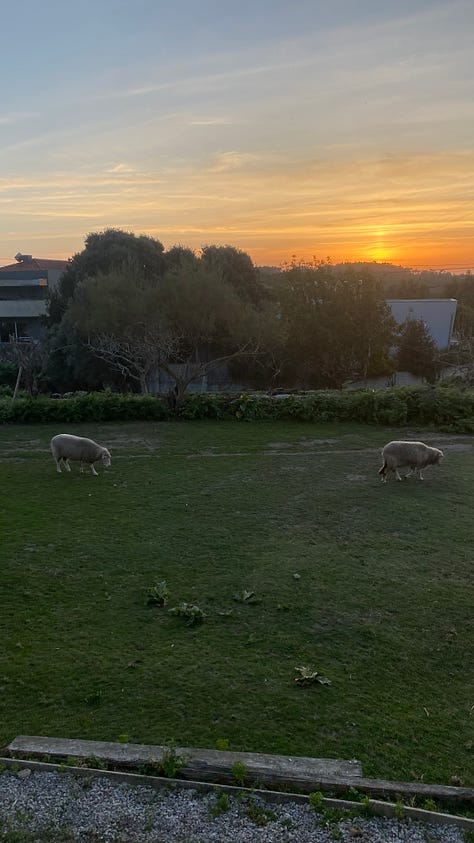
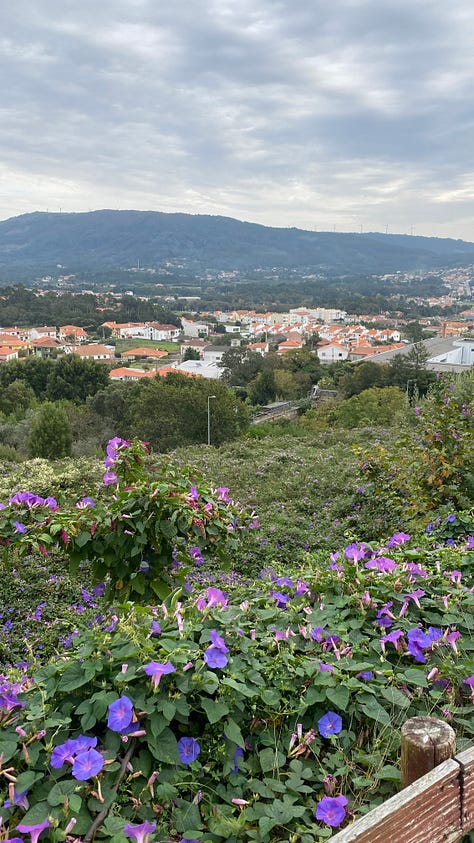
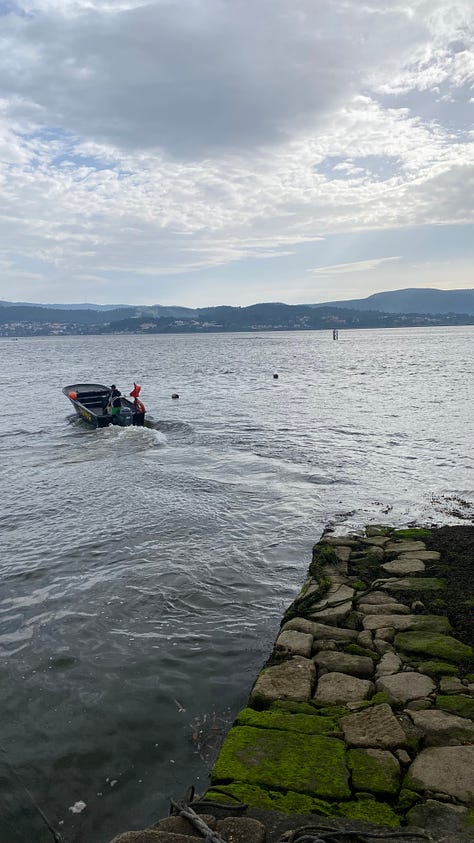
Once we crossed into Spain, especially in the last 100km, I could feel us reintegrating into “real life.” The camino passed through touristy beaches, charming colonial towns, and even small cities. I struggled to adapt to the change. I preferred dirt paths over cobblestone, and estancias over large towns.
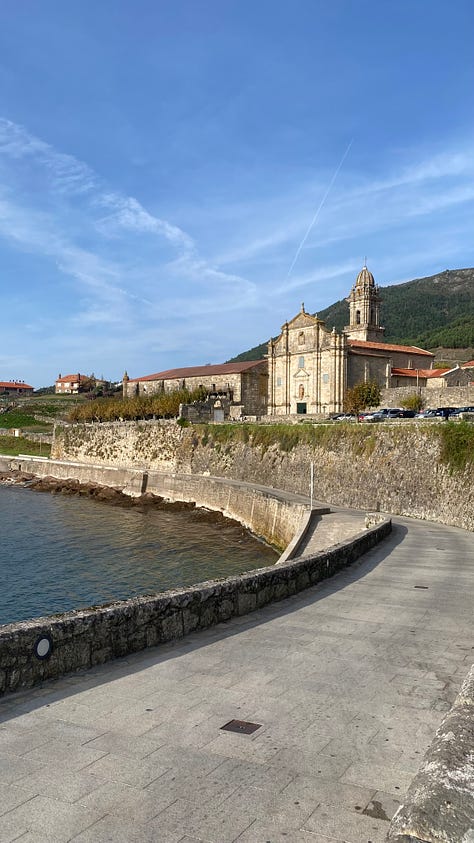
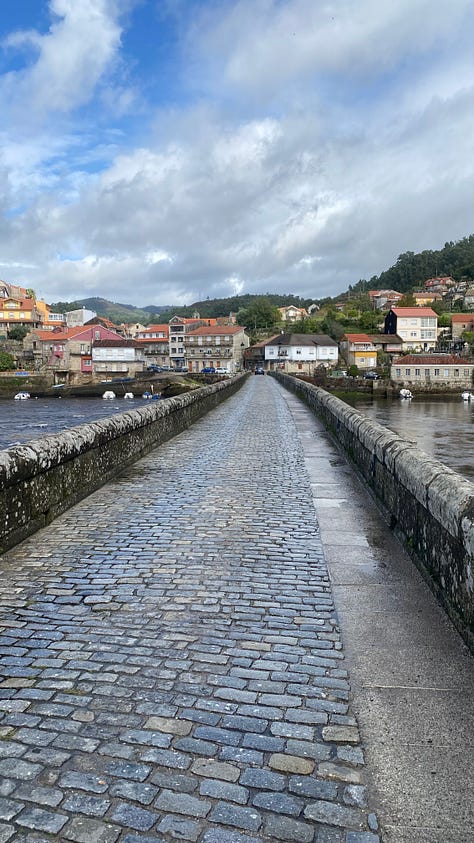
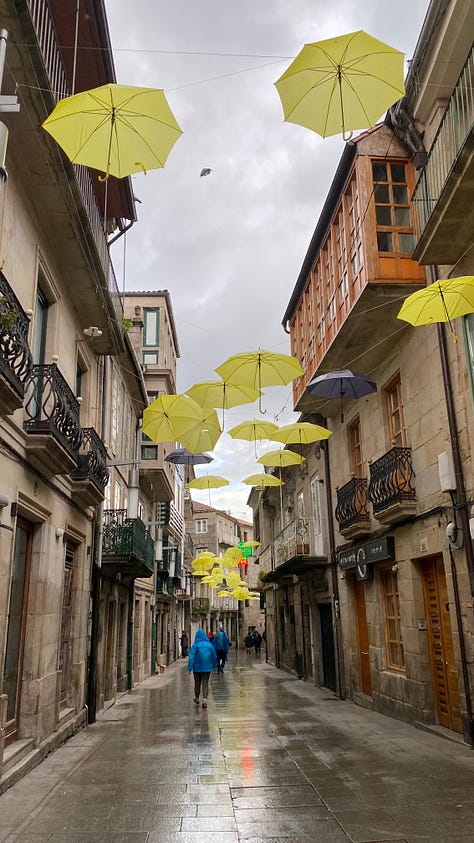
Finishing
I often joked with my friends that nothing would stop me from reaching Santiago; that I would crawl if I had to. Despite this fiery confidence, I walked into the Cathedral of Santiago completely shocked that I had made it.
The morning of our arrival into Santiago, almost our entire albergue left together, before daylight, powered by pure adrenaline. We all ended up walking our own pace, and I relished having some alone time to reflect on my experience, but we kept each other updated via a group chat, and I met up with one friend for the last 8km to Santiago. We skirted towards the finish line, obsessively trying to avoid looking at the distance markers counting us down. Gushing with anticipation, we imagined what it would feel like to walk into the Cathedral.
I imagined walking into the Cathedral to roaring applause and a victory parade; maybe I’d drop to my knees and start sobbing, or run a victory lap around the square shouting with joy. When I finally walked into the square of Santiago de Compastela, sometime around 1:00pm, all I felt was astounding relief. I made it, and I had definitive proof that I could reach a finish line even when it was painful; I could do hard things.
What’s Next
After the Camino, I decided to spend a week or two relaxing on the southern coast of Portugal. Once I’m ready to start moving again, I’ll jump into Spain so I can keep practicing my Spanish in a new corner of the world. If you’ve ever been to Andalusia and have any recommendations, let me know!





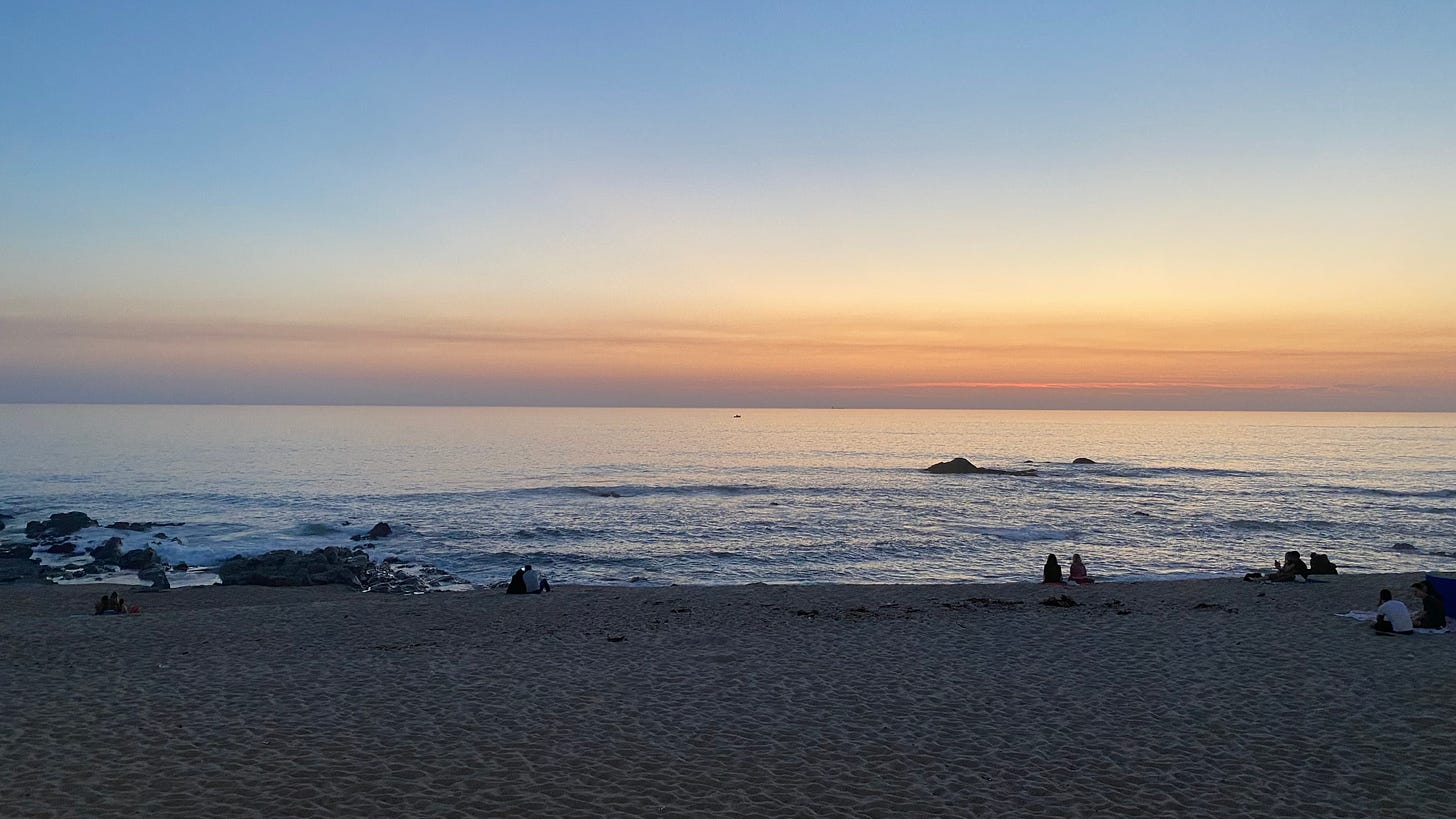
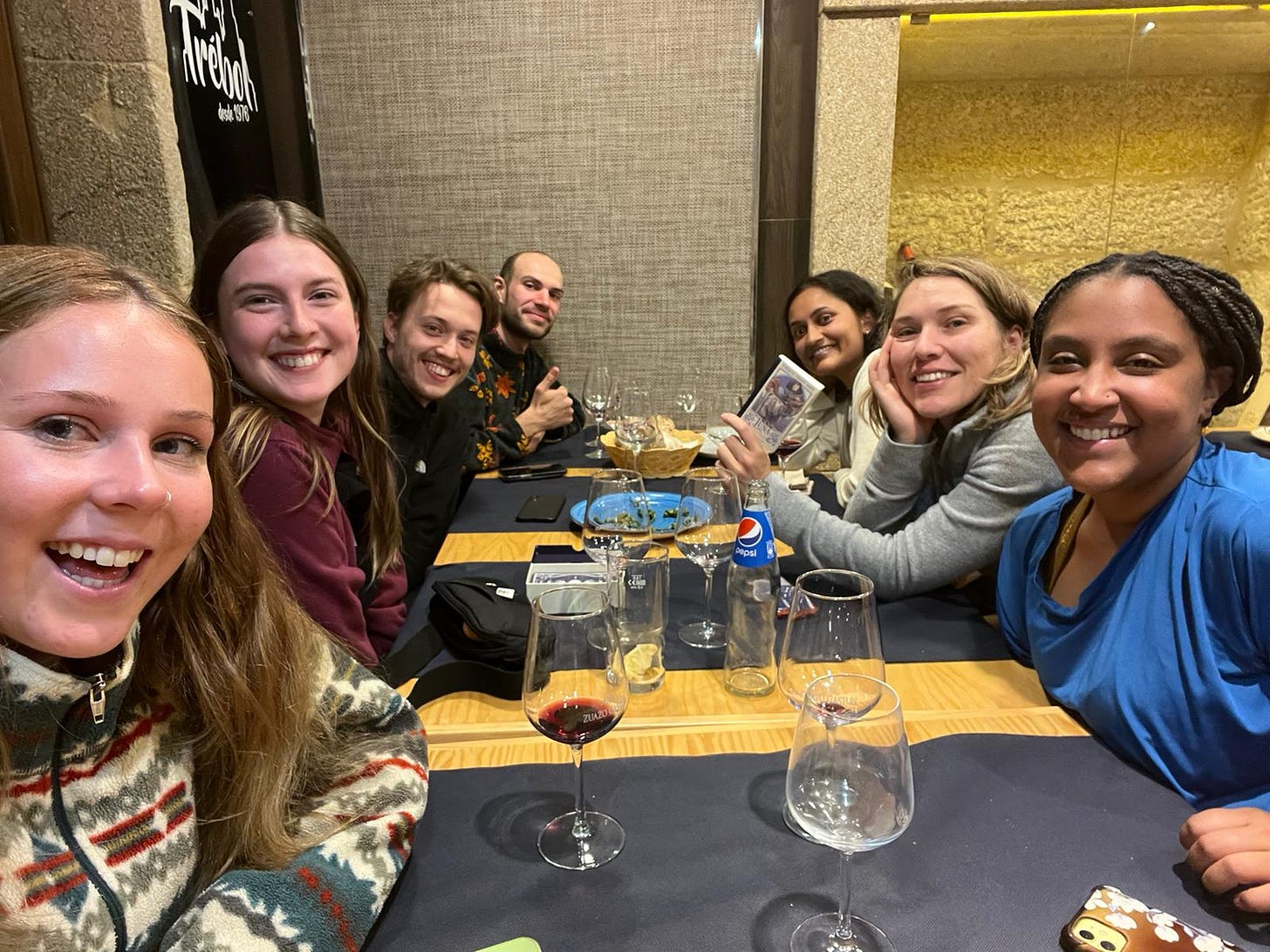
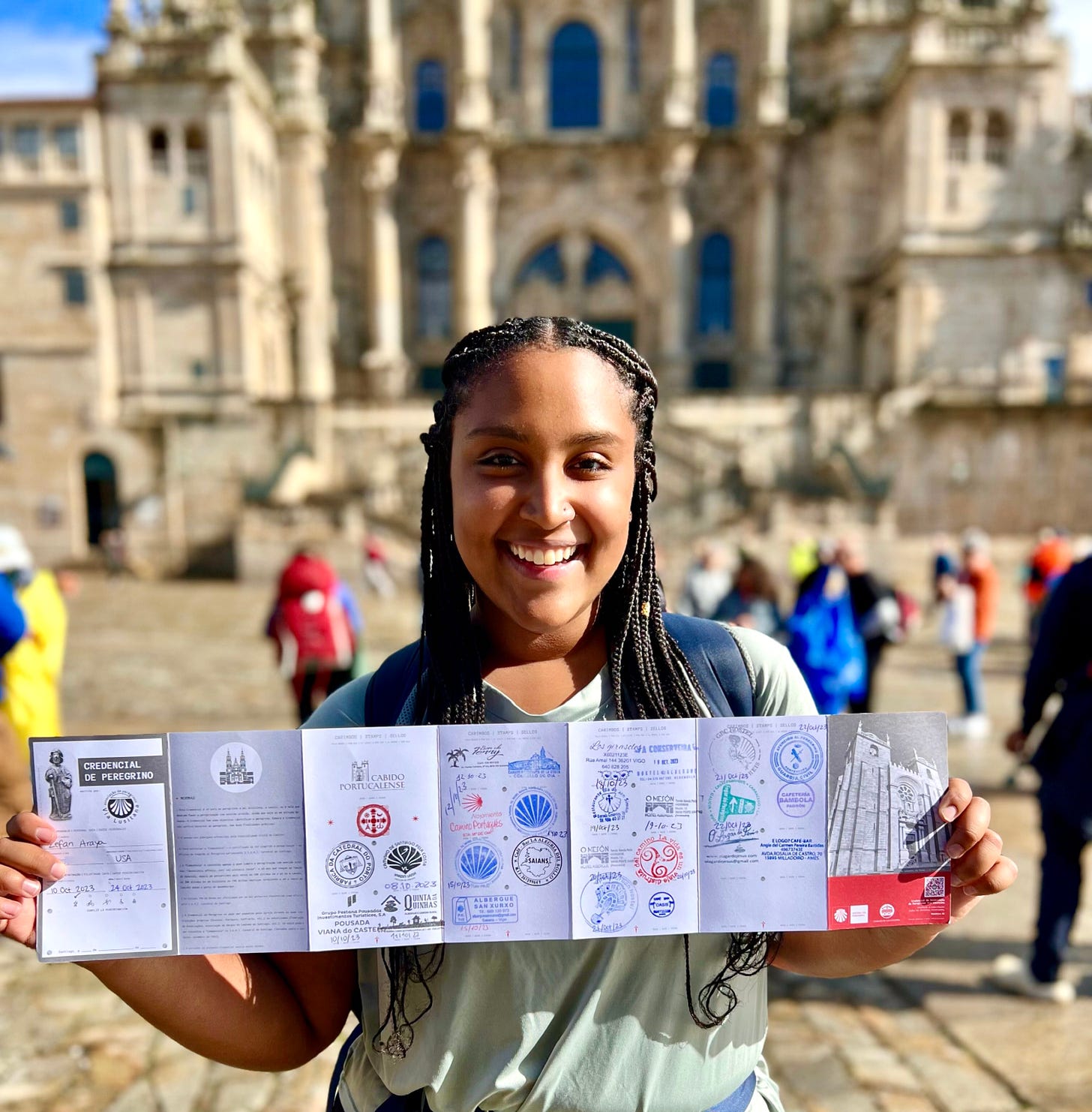
Go you! What an amazing journey. Physically and mentally you've sure shown yourself you CAN do hard things. I love this. And the connections you made along the way too-how cool!
What a beautiful and inspiring experience. Congratulations! I recently did the 16 mile tip-to-tip trip here in NYC, walking from the top to Manhattan to the bottom, which seems like nothing compared to 174 miles LOL but it was a challenge and so fun to see more of the city all in one day. Who knows where I'll walk to next.. Excited to follow your journey.